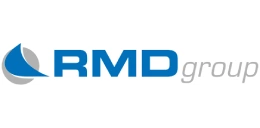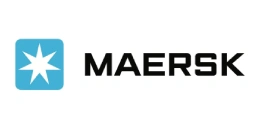Diammonium Phosphate Production: Cost Model Analysis
_11zon.webp)
What is Diammonium Phosphate?
Diammonium Phosphate (DAP) is among the most popular phosphorus fertilizers in the world due to its high concentration of nutrients and multiple uses in agriculture. It is manufactured by reacting ammonia with phosphoric acid, forming a compound that has about 18% nitrogen and 46% phosphorus pentoxide (P2O5).
Key Applications Across Industries:
Such levels of nutrients make DAP an effective supply of critical macronutrients for plants, especially for root development, seed germination, and plant growth early on. Farmers use DAP due to its highly soluble nature in water, which makes nutrients immediately available to plants, enhancing crop yield and productivity. Besides its agronomic significance, DAP has additional industrial applications like in fire retardants, fermentation, and metal treatment, an indication of its applicability across industries. Being granular in nature, it is easy to store, mix, and apply, hence compatible with other fertilizers. As the world's demand for food security and eco-friendly agricultural production continues to rise, DAP has emerged as an essential input for small-scale farmers and large-scale commercial agriculture enterprises globally.
What the Expert Says: Market Overview & Growth Drivers
The global diammonium phosphate market reached USD 46.8 Billion in 2024. According to IMARC Group, the market is projected to reach USD 68.4 Billion by 2033, at a projected CAGR of 4.3% during 2025-2033. Demand for diammonium phosphate is mainly fueled by increasing global food consumption, which is inducing the demand for increased productivity in agriculture. The reduction in arable land from urbanization and industrialization forces farmers to use nutrient-enriched fertilizers such as DAP to sustain crop growth.
Policies made by governments, such as subsidies and support to fertilizers in key agrarian economies like India and China, further enhance demand. In addition, increased production of cereals, grains, and cash crops leads to regular consumption. Supply-side factors such as investments by market leaders in capacity builds, backward integration into ammonia and phosphoric acid, and long-term supply contracts at strategic levels stabilize delivery. New market opportunities are emerging with technological advancements like nano-DAP and liquid DAP that improve nutrient-use efficiency. But global trade patterns, particularly Chinese export curbs and growing dependence on suppliers from Morocco and Saudi Arabia have increased supply sensitivities in the chain, elevating cost volatility and supply safety as key drivers that define the market.
Case Study on Cost Model of Diammonium Phosphate Manufacturing Plant:
Objective
One of our clients reached out to us to conduct a feasibility study for setting up a large-scale diammonium phosphate manufacturing plant.
IMARC Approach: Comprehensive Financial Feasibility
We developed a comprehensive financial model for the setup and operation of a proposed diammonium phosphate manufacturing plant in United Arab Emirates. This plant is designed to produce 1,000,000 tons of diammonium phosphate annually.
Manufacturing Process: Diammonium Phosphate (DAP) manufacture through pipe reactor technology is a continuous and effective process. Phosphate rock is firstly mined, beneficiated to eliminate impurities, and then treated with sulfuric acid, which is generated through the contact process to obtain phosphoric acid, with a byproduct of gypsum. The phosphoric acid is then purified to remove impurities like iron and aluminum. At the same time, ammonia is synthesized via the Haber-Bosch process and pumped into the pipe reactor, where it is mixed with phosphoric acid at controlled temperatures and pressures to yield ammonium phosphates. The critical reaction is H3PO4 + 2NH3 → (NH4)2HPO4 to produce DAP. The solution is crystallized, drum granulated or pelletized, and dried to produce free-flowing granules for agricultural application. Then, the granules are cooled and screened to uniform size, and fines are recycled back into the process. Lastly, the final DAP is bagged or bulk shipped and warehoused for distribution. This pipe reactor process reduces the efficiency of the reaction, uniformity of the product, and cost in comparison to traditional batch processes.
_11zon.webp)
Get a Tailored Feasibility Report for Your Project Request Sample
Mass Balance and Raw Material Required: The primary raw materials used in the diammonium phosphate producing plant are phosphoric acid, ammonia, sulfuric acid, coloring oil, package oil and water. For a plant producing 1 ton of diammonium phosphate, 0.40 ton of phosphoric acid, 0.22 ton of ammonia, 0.08 ton of sulfuric acid, 0.003 ton of coloring oil, 0.004 ton of package oil and 0.38 ton of water is required.
Techno-Commercial Parameter:
- Capital Investment (CapEx): Capital expenditure (CapEx) in a manufacturing plant includes various investments essential for its setup and long-term operations. It covers machinery and equipment costs, including procurement, installation, and commissioning. Civil works expenses involve land development, factory construction, and infrastructure setup. Utilities such as power, water supply, and HVAC systems are also significant. Additionally, material handling systems, automation, environmental compliance, and safety measures are key components. Other expenditures include IT infrastructure, security systems, and office essentials, ensuring operational efficiency and business growth.
- Operating Expenditure (OpEx): Operating expenditure is the cost incurred to operate a manufacturing plant effectively. Opex in a manufacturing plant typically includes the cost of raw materials, utilities, depreciation, taxes, packing cost, transportation cost, and repairs and maintenance. The operating expenses are part of the cost structure of a manufacturing plant and have a significant effect on profitability and efficiency. Effective control of these costs is necessary for maintaining competitiveness and growth.
_11zon.webp)
- Profitability Analysis Year on Year Basis: The proposed diammonium phosphate plant, with a capacity of 1,000,000 tons of diammonium phosphate annually, achieved an impressive revenue of US$ 1.25 billion in its first year. We assisted our client in developing a detailed cost model, which projects steady growth, with revenue rising throughout the projected period. Moreover, gross profit margins improve from 18.5% to 19.6% by year 10, and net profit rises from 11.1% to 16.4%, highlighting strong financial viability and profitability.
_11zon.webp)
Conclusion & IMARC's Impact:
Our financial model for the diammonium phosphate manufacturing plant was meticulously developed to meet the client’s objectives, providing an in-depth analysis of production costs, including raw materials, manufacturing, capital expenditure, and operational expenses. By addressing the specific requirements of producing 1,000,000 tons of diammonium phosphate annually, we successfully identified key cost drivers and projected profitability, considering market trends, inflation, and potential fluctuations in raw material prices. This comprehensive financial model equipped the client with valuable insights into strategic decision-making, demonstrating our commitment to delivering high-quality, client-focused solutions that ensure the long-term success of large-scale manufacturing ventures.
Latest News and Developments:
- In May 2025, two new factories in Uttar Pradesh, each capable of producing two lakh bottles per day, saw the commercial production of nano liquid DAP (di-ammonium phosphate) by Cooperative IFFCO, one of the nation's largest fertiliser companies.
- In November 2024, PhosAgro reported that its Balakovo site began producing diammonium phosphate and increased related acid production, and that the company planned Record RUB 75 billion in 2024 into capacity.
- In March 2024, two fertiliser facilities in Basra, southern Iraq, were launched by Iraqi Prime Minister Mohammed Shia Al-Sudani. Al-Sudani opened urea and di-ammonium phosphate (DAP) fertiliser factories while in the Basra governorate.
Why Choose IMARC:
IMARC's Financial Model Expertise: Helping Our Clients Explore Industry Economics
IMARC is a global market research company that offers a wide range of services, including market entry and expansion, market entry and opportunity assessment, competitive intelligence and benchmarking, procurement research, pricing and cost research, regulatory approvals and licensing, factory setup, factory auditing, company incorporation, incubation services, recruitment services, and marketing and sales.
Under our factory setup services, we assist our clients in exploring the feasibility of their plants by providing comprehensive financial modeling. Additionally, we offer end-to-end consultation for setting up a plant in India or abroad. Our financial modeling includes an analysis of capital expenditure (CapEx) required to establish the manufacturing facility, covering costs such as land acquisition, building infrastructure, purchasing high-tech production equipment, and installation. Furthermore, the layout and design of the factory significantly influence operational efficiency, energy consumption, and labor productivity, all of which impact long-term operational expenditure (OpEx). So, every parameter is covered in the analysis.
At IMARC, we leverage our comprehensive market research expertise to support companies in every aspect of their business journey, from market entry and expansion to operational efficiency and innovation. By integrating our factory setup services with our deep knowledge of industry dynamics, we empower our clients to not only establish manufacturing facilities but also strategically position themselves in highly competitive markets. Our financial modeling and end-to-end consultation services ensure that clients can explore the feasibility of their plant setups while also gaining insights into competitors' strategies, technological advancements, and regulatory landscapes. This holistic approach enables our clients to make informed decisions, optimize their operations, and align with sustainable practices, ultimately driving long-term success and growth.
Our Clients
Contact Us
Have a question or need assistance?
Please complete the form with your inquiry or reach out to us at
Phone Number
+91-120-433-0800+1-201-971-6302
+44-753-714-6104











